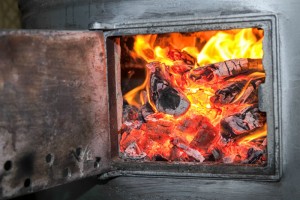Wood smoke from home heating is the primary source of wintertime air pollution in our country. It contains fine particulates, gases, and even toxic compounds. These pollutants can cause eye, nose, and throat irritation, as well as respiratory disease. Wintertime wood burning for residential home heating can be a significant source of pollution both inside your home and out. Wood smoke impacts occur during the winter months when cold temperatures contribute to increased burning. Frequent winter inversions cause air stagnation, which causes pollutant levels to exceed healthy air quality standards.
Wood Stove Change Out Programs
As a result of the increased attention now being given to air quality, many states have begun to offer tax credits and incentives (in the form of wood stove change-out programs) that offer rebates to replace old uncertified stoves with new cleaner stoves. Most programs allow consumers to trade in an old wood stove for a new one, at a discounted price, but some only allow trade outs to lower emitting appliances such as pellet and gas stoves, or give much higher rebates for pellet or gas stoves.
North Carolina has followed the trend and is now offering incentives to change out these older, less efficient stoves. The state provides a personal tax credit covering 35% of the purchase and installation costs of renewable energy property (including wood or pellet stoves), up to $3,500. The credit cannot exceed 50% of a taxpayer’s liability for the year.
The Alliance for Green Heat believes that many wood stove change out programs haven’t taken a holistic approach and, as a result, air quality improvements have been somewhat undermined. The Alliance has urged the EPA to use their leverage in directing funds to areas that have demonstrated a level of commitment, such as banning the installation of new exempt wood stoves, old, second hand uncertified wood stoves and/or unregulated outdoor wood boilers.
The Importance of Changing Out Wood Stoves
Unlike cars, refrigerators and virtually every other appliance, wood stoves can last so long that they remain in use for upwards of 50 years. As a result, most wood stoves are still not EPA certified, a program that wasn’t started until 1990. Pollution from older stoves, or from incorrectly used new stoves, is a serious health concern, and one of the best ways to get them out of circulation is a change-out program.
Selecting a New Wood Stove
Back in the late 1980s, the EPA established a mandatory smoke emission limit for catalytic wood stoves (4.1g/h) and for non-catalytic wood stoves (7.5g/h). Today, all wood stoves sold in the U.S. must meet these limits, and many are certified for emissions down in the 1 to 4g/h range. The EPA certified emission rate is a reliable number that can be compared from one model to the next.
When shopping for a new wood stove, you’ll have two main sources of information to help you in making your decision: manufacturer’s literature and the advice you receive from the wood stove dealer. This is where knowing who to trust is of the utmost importance. The professionals at Environmental Chimney Service would like to be your trusted resource for this information. We offer some of the finest Osburn woodstoves on the market, one of which might just be perfect for your needs. We invite you to call us today or click here to schedule your appointment online. We look forward to hearing from and serving you and your family.

